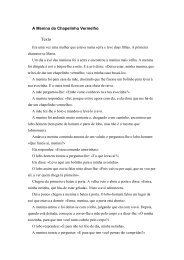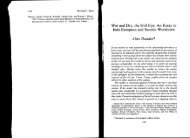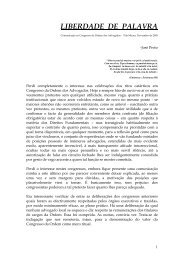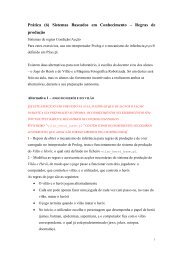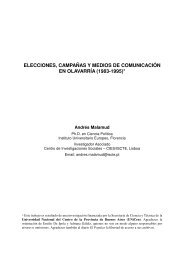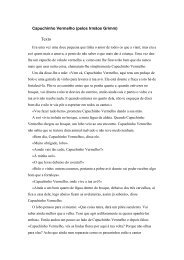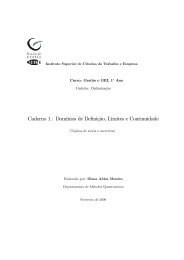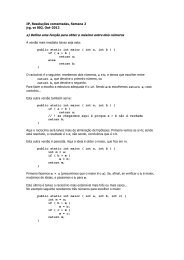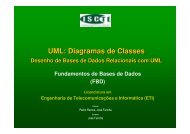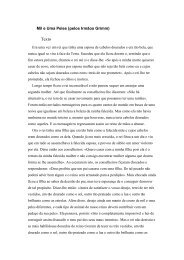Bloody Mary in the Mirror: A Ritual Reflection of Pre-Pubescent ...
Bloody Mary in the Mirror: A Ritual Reflection of Pre-Pubescent ...
Bloody Mary in the Mirror: A Ritual Reflection of Pre-Pubescent ...
Create successful ePaper yourself
Turn your PDF publications into a flip-book with our unique Google optimized e-Paper software.
BLOODY MARY IN THE MIRROR<br />
131<br />
ger <strong>of</strong> a girl's be<strong>in</strong>g picked up by a total stranger". <strong>Pre</strong>cisely! This is<br />
because <strong>the</strong> majority <strong>of</strong> folklorists are unable or unwill<strong>in</strong>g to recognize <strong>the</strong><br />
unconscious content <strong>of</strong> folklore fantasy. If <strong>in</strong>dividuals knew, consciously<br />
knew, what <strong>the</strong>y were do<strong>in</strong>g when <strong>the</strong>y participated <strong>in</strong> symbolic rituals, or<br />
told jokes, or sang folksongs, etc. <strong>the</strong>y could not perform such. Folklore as<br />
a socially sanctioned outlet to permit <strong>in</strong>dividuals to do what is normally not<br />
permitted by society, superego, conscience, normative morality, and <strong>the</strong> like<br />
<strong>of</strong>ten needs <strong>the</strong> guise or disguise <strong>of</strong> fantasy. This is why it is so <strong>of</strong>ten taboo<br />
topics which <strong>in</strong>spire <strong>the</strong> creation and perpetuation <strong>of</strong> folklore. So <strong>the</strong> fact<br />
that participants <strong>in</strong> <strong>Bloody</strong> <strong>Mary</strong> rituals might not be able to articulate fears<br />
about <strong>the</strong> menarche <strong>in</strong> no way <strong>in</strong>validates <strong>the</strong> <strong>the</strong>ory proposed <strong>in</strong> this essay.<br />
Quite <strong>the</strong> contrary. I would not <strong>in</strong> <strong>the</strong> least expect most girls from age 7 to<br />
12 to confirm my analysis.<br />
Is <strong>the</strong> topic <strong>of</strong> menstruation taboo <strong>in</strong> American society? As Buckley and<br />
Gottlieb note <strong>in</strong> <strong>the</strong>ir useful survey <strong>of</strong> anthropological research on <strong>the</strong> subject,<br />
"In <strong>the</strong> West we are accustomed to th<strong>in</strong>k<strong>in</strong>g <strong>of</strong> menstruation as<br />
largely negative. It is '<strong>the</strong> curse'..." (1988:32). There is no doubt about it.<br />
The plethora <strong>of</strong> traditional euphemisms-more than one hundred-attests<br />
to its taboo status (cf.J<strong>of</strong>fe 1948, Boone 1954, Larsen 1963, Ernster 1975,<br />
Delaney, Lupton and Toth 1977:92-94, Laws 1990:80-982). Some terms are<br />
used by men; o<strong>the</strong>rs by women; a few by both men and women. With<br />
regard to folk speech, it is noteworthy that <strong>the</strong>re does seem to be a<br />
decided gender dist<strong>in</strong>ction <strong>in</strong> <strong>the</strong> very pronunciation <strong>of</strong> <strong>the</strong> word "menstruation."<br />
American men tend to use four syllables <strong>in</strong> contrast to women<br />
who typically use only three <strong>in</strong> "menstration" without <strong>the</strong> "u". Most dictionaries<br />
(presumably compiled chiefly by men) <strong>in</strong>clude only <strong>the</strong> men's<br />
pronunciation.<br />
One could argue that <strong>the</strong> more folk speech (circumlocutions,<br />
euphemisms) for a given item or activity, <strong>the</strong> more taboo it is likely to be.<br />
In <strong>the</strong> present context, it is surely noteworthy that one <strong>of</strong> <strong>the</strong> n<strong>in</strong>ety<br />
expressions reported by J<strong>of</strong>fe <strong>in</strong> 1948 was one from a woman <strong>in</strong> <strong>the</strong><br />
American military: "I'm <strong>Bloody</strong> <strong>Mary</strong> today" (1948:183, 185). This constitutes<br />
prima facie evidence that "<strong>Bloody</strong> <strong>Mary</strong>" can refer to menstruation.<br />
The taboo status <strong>of</strong> menstruation and <strong>the</strong> "shame" wrongly associated<br />
with its presence means that even <strong>in</strong> <strong>the</strong> late twentieth century, little<br />
girls are <strong>of</strong>ten kept <strong>in</strong> <strong>the</strong> dark about it, a metaphor which is apt <strong>in</strong> <strong>the</strong><br />
light <strong>of</strong> <strong>the</strong> darkness imposed as part <strong>of</strong> sett<strong>in</strong>g <strong>the</strong> stage for <strong>Bloody</strong><br />
<strong>Mary</strong> rituals-which are ei<strong>the</strong>r performed at night, e.g., midnight, or <strong>in</strong><br />
bathrooms dur<strong>in</strong>g <strong>the</strong> day with <strong>the</strong> lights turned <strong>of</strong>f. Some parents and<br />
teachers, products <strong>of</strong> repressed American culture, are reluctant to discuss



